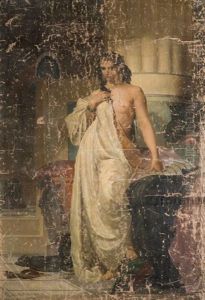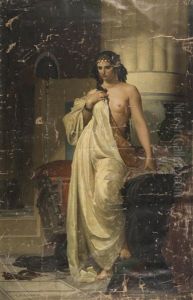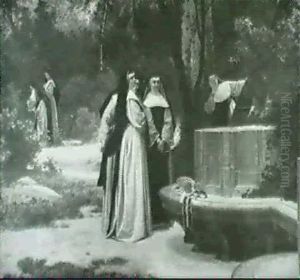Louis Marie Baader Paintings
Louis Marie Baader, born in 1828 in Paris, France, was a distinguished 19th-century French painter known for his historical and genre paintings. Baader's career spanned a period of significant transformation in the European art world, from the romanticism of the early 19th century to the burgeoning modernist movements at the turn of the 20th century. Despite these shifts, Baader's work remained rooted in the classical traditions, reflecting his rigorous academic training and his admiration for the masters of the Renaissance and the Baroque periods.
Baader studied at the École des Beaux-Arts in Paris, where he was influenced by the teachings of prominent French artists of the time. His early work was marked by a meticulous attention to detail and a passion for historical accuracy, qualities that would define his artistic output throughout his career. Baader's paintings often depicted scenes from European history, mythology, and literature, showcasing his ability to bring to life the grandeur and drama of the past with vivid realism and emotional depth.
Throughout his career, Baader exhibited his work at the Paris Salon, the prestigious annual and biennial exhibition held by the French Academy of Fine Arts. His contributions to the Salon were met with critical acclaim, earning him medals and recognition that bolstered his reputation in France and abroad. Despite the evolving tastes of the art world and the rise of new movements such as Impressionism, which challenged the academic norms that Baader's work exemplified, he maintained a loyal following.
Baader's commitment to historical genre painting at a time of rapid artistic change reflects both his reverence for the artistic traditions of Europe and his belief in the enduring value of narrative and representation in art. His paintings, characterized by their rich detail, vibrant color palette, and dynamic compositions, continue to be appreciated for their technical skill and evocative portrayal of historical and mythological scenes.
Louis Marie Baader passed away in 1920, leaving behind a legacy that captures the spirit of an era that straddled the old and the new in the world of art. His works remain a testament to the enduring appeal of classical painting techniques and the power of art to bring history to life. Through his contributions to the Paris Salon and his dedication to his craft, Baader played a role in the rich tapestry of 19th-century European art, bridging the gap between the academic traditions of his predecessors and the evolving landscape of modern art.











